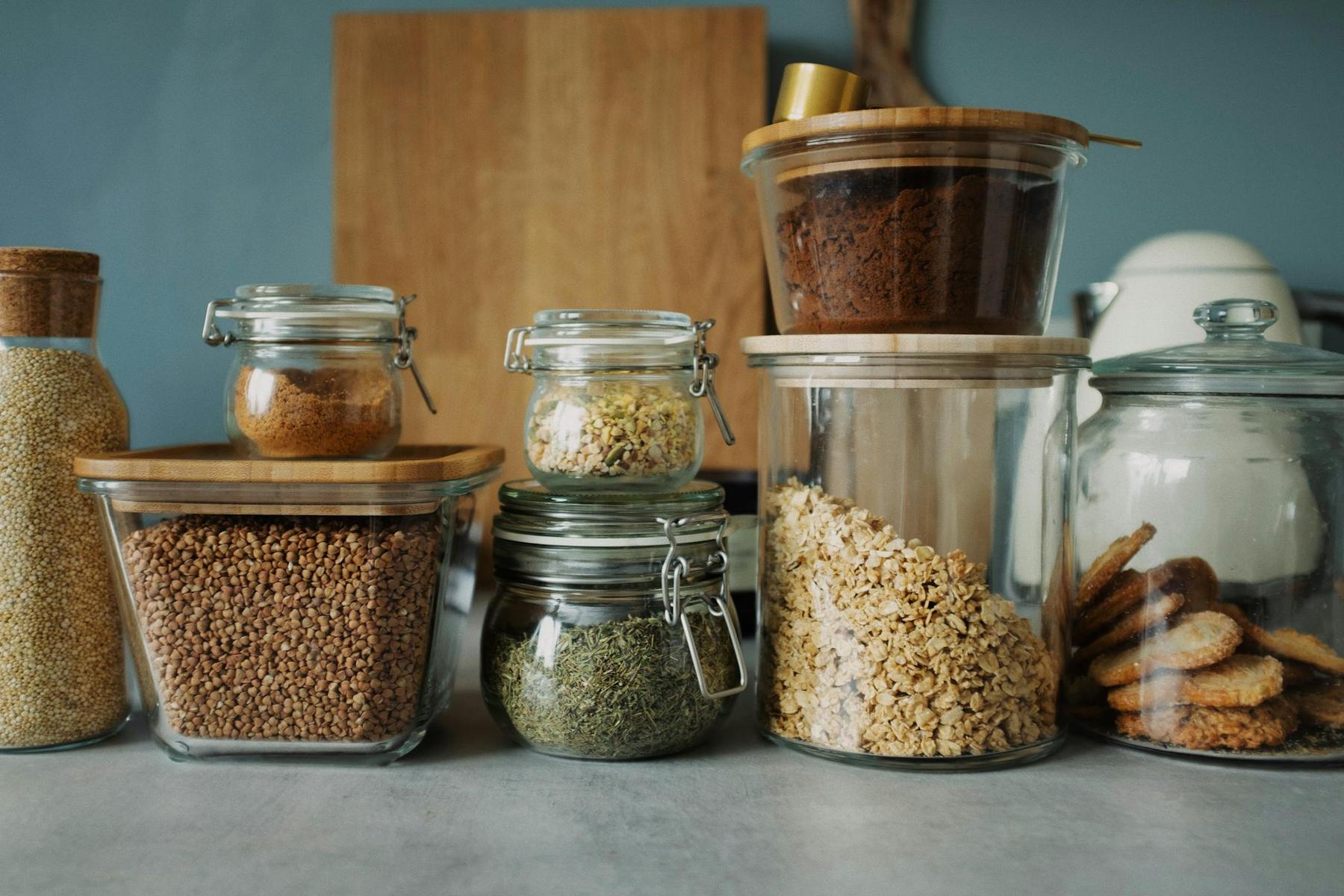The journey to weight loss often begins with good intentions but can quickly falter without the right environment to support your goals. Your pantry—that space where late-night decisions are made and meal preparations begin—serves as the foundation for your nutritional choices. Creating a supportive pantry isn’t merely about removing temptations; it’s about strategically designing an ecosystem that makes healthy choices effortless and sustainable. For many Australians struggling with weight management, transforming this overlooked space could be the difference between temporary progress and meaningful results.
Why Is Your Pantry Critical to Weight Loss Success?
The connection between pantry organization and weight management is backed by behavioural science. Research shows that food accessibility significantly influences dietary habits, with visible, readily available options more likely to be consumed. A well-stocked, strategically organized pantry removes decision fatigue—that mental exhaustion that leads to impulsive choices—and creates a supportive environment where nutritious options become the path of least resistance.
Environmental cues heavily influence eating behaviours, often more powerfully than willpower alone. When nutrient-dense, weight-management-friendly foods occupy prime positions in your pantry, they become your default choices during busy weeknights, stressful periods, or when hunger strikes unexpectedly. The pantry thus transforms from a potential saboteur to a weight loss ally.
Beyond convenience, a thoughtfully stocked pantry provides nutritional consistency—ensuring that even on days when shopping isn’t possible, you maintain access to balanced meal components that align with your weight management goals. This consistency cultivates stability in your nutritional intake, helping to avoid the extreme fluctuations that often derail progress.
What Are the Essential Food Categories for a Weight-Loss Pantry?
Protein-Rich Staples
Protein stands as the cornerstone of effective weight management, helping preserve muscle mass during weight loss while promoting satiety that reduces overall caloric intake. A supportive pantry should prioritize:
- Canned fish: Options like tuna, salmon, and sardines (packed in water or brine) deliver omega-3 fatty acids and vitamin D alongside protein, supporting metabolic health and inflammation reduction.
- Legumes: Chickpeas, lentils, black beans, and kidney beans in dried or low-sodium canned forms offer plant-based protein coupled with fibre, supporting digestive health and prolonged fullness.
- Nuts and seeds: Walnuts, almonds, chia seeds, and flaxseeds provide healthy fats and protein that stabilize blood sugar and control appetite when consumed in measured portions.
Whole Grains and Fibre Sources
Fibre plays a crucial role in weight management by regulating digestion, extending satiety, and supporting gut health. Essential pantry components include:
- Oats: Rich in beta-glucan (a soluble fibre), oats support cholesterol management while providing steady energy release, making them ideal for breakfast or snack preparations.
- Quinoa and brown rice: These whole grains contain more fibre, protein, and micronutrients than refined alternatives, offering sustained energy without blood sugar spikes.
- Wholemeal pasta: A higher-fibre alternative to traditional pasta that supports digestive health while providing a satisfying base for nutritious meals.
Healthy Fats
Strategic inclusion of unsaturated fats supports cardiovascular health, reduces inflammation, and enhances absorption of fat-soluble vitamins:
- Extra virgin olive oil: A versatile cooking and dressing option rich in monounsaturated fats and polyphenols with anti-inflammatory properties.
- Avocado products: Shelf-stable avocado cups or mash provide heart-healthy fats that support satiety and nutrient absorption.
Flavour Enhancers
Building flavour without excessive calories, sodium, or sugar requires strategic pantry investments:
- Herbs and spices: Cumin, cinnamon, turmeric, and garlic powder not only enhance taste but also offer metabolic benefits and anti-inflammatory properties.
- Vinegars: Balsamic, apple cider, and rice vinegars add complexity to dressings and marinades without significant calories.
- Low-sodium sauces and bases: Tomato paste, canned tomatoes, and reduced-sodium broths create foundations for soups, stews, and sauces without excessive salt.
How Should You Organize Your Pantry for Weight Management?
Pantry organization plays a pivotal role in eating behaviour, with strategic placement influencing consumption patterns. Implement these evidence-based approaches:
Prioritize visibility for nutritious options: Position protein bars, roasted chickpeas, air-popped popcorn, and other nutrient-dense snacks at eye level—the prime real estate of your pantry where items are most likely to be selected.
Employ the out-of-sight principle: Store occasional treats in opaque containers on high shelves, creating a small barrier that encourages mindful consumption rather than impulsive snacking.
Create meal-building zones: Organize pantry staples into meal-component sections (proteins, grains, cooking bases) to simplify meal assembly and reduce reliance on takeaway during busy periods.
Implement portion control systems: Pre-portion nuts, seeds, and other calorie-dense but nutritious foods into appropriate serving sizes using small containers or reusable bags.
Batch-prepare foundation ingredients: Cook and freeze or refrigerate base components like quinoa, brown rice, or roasted vegetables to streamline meal preparation and support consistent healthy eating.
A 2025 pantry reset study found participants experienced fewer cravings and improved energy levels after implementing strategic organization principles focused on whole food accessibility, demonstrating the impact of environmental design on nutrition outcomes.
Which Items Should You Remove from Your Pantry?
Creating a supportive environment sometimes requires elimination alongside addition. Consider removing or significantly limiting:
Processed meats and high-sodium products: Items like sausages, deli meats, and instant noodles often contain preservatives, excessive sodium, and added sugars that counter weight management efforts.
Deceptive “low-fat” products: Many reduced-fat snacks compensate with additional sugar and refined carbohydrates, potentially undermining weight management more than their full-fat counterparts.
Refined carbohydrates: White rice, standard flour tortillas, and sugary cereals lack the fibre and nutrients that support satiety and metabolic health.
Sugar-sweetened beverages and mixes: Cordials, soft drinks, and sweetened drink powders contribute empty calories that don’t register in your body’s satiety systems.
Ultra-processed snack foods: Items with lengthy ingredient lists featuring additives, preservatives, and artificial components typically offer poor nutritional value relative to their caloric content.
Rather than immediate elimination, consider a gradual transition—replacing processed options with whole-food alternatives as they’re consumed, allowing your palate and habits to adjust progressively.
How Can You Create Quick, Healthy Meals from Pantry Staples?
A well-stocked pantry serves as the foundation for nutritious meals even when fresh ingredients are limited. The table below illustrates how pantry staples can combine into balanced, weight-management-supportive meals:
| Meal Type | Pantry Staple Combinations | Nutritional Benefits |
|---|---|---|
| Breakfast | Overnight oats with chia seeds, cinnamon, and walnuts | High fibre, protein, and healthy fats for sustained energy |
| Lunch | Quinoa salad with canned tuna, chickpeas, olive oil, and lemon juice | Complete protein profile with omega-3s and complex carbohydrates |
| Dinner | Brown rice stir-fry with tinned tomatoes, black beans, and turmeric | Fibre-rich with plant protein and anti-inflammatory compounds |
| Snack | Air-popped popcorn with nutritional yeast and herbs | Whole grain fibre with B-vitamins and minimal calories |
These meal frameworks demonstrate how strategic pantry stocking enables nutritional consistency regardless of shopping frequency. The key lies in maintaining versatile ingredients that can adapt to various preparations while delivering balanced macronutrients and essential micronutrients.
For optimal results, combine these pantry staples with fresh vegetables and lean proteins when available, using the shelf-stable components as reliable foundations that simplify meal planning and preparation.
Integrating Pantry Management with Your Weight Loss Journey
Building a supportive pantry represents an essential environmental modification that aligns your physical space with your health objectives. This approach acknowledges that sustainable weight management extends beyond individual food choices to encompass the systems and structures that influence those decisions.
For many Australians navigating weight loss, comprehensive approaches that combine environmental optimization with professional guidance yield the most significant results. Telehealth services integrate pantry planning within broader weight management strategies, ensuring that home environments support rather than undermine clinical interventions.
By prioritizing protein-rich staples, whole grains, healthy fats, and strategic flavour enhancers while minimizing processed foods, you create a nutritional framework that supports metabolic health and sustainable weight management. This approach transforms each meal preparation into an opportunity to advance rather than hinder your progress.
Remember that pantry transformations need not occur overnight—incremental changes often prove more sustainable than complete overhauls. Begin with introducing key supportive staples and gradually transition away from less supportive options, allowing your preferences and habits to evolve alongside your pantry’s composition.
How often should I update my weight loss pantry?
Review your pantry quarterly to assess alignment with your weight management goals. Seasonal changes in produce availability and activity levels may necessitate adjustments to your staple inventory. Additionally, schedule a brief weekly assessment before grocery shopping to identify gaps in essential categories and prevent impulse purchases of less supportive items.
Can pantry organization really impact weight loss results?
Yes, environmental design significantly influences nutritional choices. Research demonstrates that food visibility and accessibility directly affect consumption patterns, with visible, easily accessed items consumed at higher rates regardless of nutritional value. Strategic organization that prioritizes weight-management-supportive foods can reduce decision fatigue and support consistent healthy choices, particularly during high-stress periods when willpower may be compromised.
What are the most versatile protein sources for a weight loss pantry?
Legumes (particularly lentils and chickpeas) offer exceptional versatility, functioning as main dish components, salad additions, or even snack items when roasted. Canned fish provides ready-to-eat protein that requires no cooking, while unflavoured protein powder can integrate into various preparations from smoothies to baked goods, offering concentrated protein without significant calories from carbohydrates or fats.
How can I maintain variety in my diet with limited pantry space?
Focus on multipurpose ingredients rather than single-use items. Herbs and spices transform basic staples into diverse culinary experiences without requiring additional storage space. Consider rotation systems where seasonal or thematic ingredients cycle through your pantry quarterly, preventing flavor fatigue while maintaining organizational efficiency. Additionally, versatile bases like quinoa, brown rice, or lentils can serve as foundations for numerous culinary traditions depending on seasoning combinations.



